Tutorials
Improve the benefits of coming to the conference further by attending our tutorials, all given by famous experts.
| Monday | |||
|---|---|---|---|
| Morning | T1 - Proving Safety of Parallel/Multi-Threaded Programs
T. Taft |
T3 - Debugging Real-time Systems
I. Broster and A. Coombes |
T5 - High-Integrity Object-Oriented Programming with Ada 2012
B. Brosgol |
| Afternoon | T2 - Multicore Programming using
Divide-and-Conquer and Work Stealing
T. Taft |
T4 - Developing Mixed-Criticality Systems
with GNAT/ORK and Xtratum
A. Alonso,
J. Pérez, A. Crespo |
T6 - Ada 2012 (Sub)type and Subprogram Contracts in Practice
J. Sparre-Andersen |
| Friday | |||
|---|---|---|---|
| Morning | T7 - Technical Basis of Model Driven Engineering
W. Bail |
T9 - Robotics Programming
L. Asplund |
T10 - Introduction to Verification with SPARK 2014
A. Wallenburg, Y. Moy |
| Afternoon | T8 - An Overview of Software Testing with an Emphasis on Statistical Testing
W. Bail |
||
Morning tutorial sessions run from 09:30 to 13:00, with a break 10:00-10:30. Afternoon tutorial sessions run from 14:00 to 17:30 with a break 15:30-16:00.
T1 - Proving Safety of Parallel/Multi-Threaded Programs
T. Taft, AdaCore
This tutorial will introduce the attendees to analysis and proof techniques for programs using parallelism and multi-threading. There are no specific prerequisites, but a familiarity with the notions of preconditions and postconditions, aliasing, race conditions, and deadlocks would be of value. The examples will be based on the threading and parallelism models of Java, Ada, and two new parallel languages, one called ParaSail[4] and another, inspired by the verifiable SPARK[1][2] subset of Ada, called Sparkel[3]. We will introduce the distinction between safety and liveness properties, and then focus primarily on techniques for the verification of safety properties, including the absence of race conditions and deadlocks. We will also discuss the issue of determinism vs. non-determinism in parallel and multi-threaded programs.
Level
Intermediate to advanced level, with some familiarity with the notions of preconditions and postconditions, aliasing, race conditions, and deadlocks.
Reasons for attending
This tutorial will enable the attendee to better understand the literature relating to formal verification of concurrent systems.
Presenter
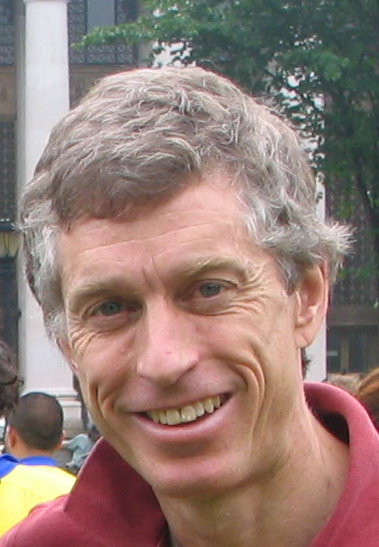
S. Tucker Taft is VP and Director of Language Research at AdaCore, a company focused on open-source tools to support the development of high-integrity software. Tucker joined AdaCore in 2011 as part of a merger with SofCheck, a company he had founded in 2002 to develop advanced static analysis technology. Prior to that Tucker was a Chief Scientist at Intermetrics, Inc. and its follow-ons for 22 years, where in 1990-1995 he led the design of Ada 95. Tucker received an A.B. Summa Cum Laude degree from Harvard University, where he has more recently taught compiler construction and programming language design.
Tucker has given many talks and tutorials, and has spent the last 4 years focused on language issues associated with parallel programming.
T2 - Multicore Programming using Divide-and-Conquer and Work Stealing
T. Taft, AdaCore
This half-day tutorial will introduce the attendee to some of the issues of parallel programming for multicore systems. We will discuss some of the models used for creating and then managing efficiently large numbers of "picothreads." The tutorial will first cover the basic technique of "divide and conquer" as it applies to splitting up computations into large numbers of separate sub-computations. We will provide examples using Intel's Cilk+ language, as well as using Go, Rust, and ParaSail, three new parallel programming languages. The tutorial will then go on to investigate the "work-stealing" scheduling mechanism used by the Cilk+ run-time, Intel's Threaded Basic Blocks library, as well as the ParaSail virtual machine. Work-stealing is an efficient way to handle the large number of very small "picothreads" created in abundance by these parallel programming technologies. We will also discuss the issues of managing storage to provide safety and separation between concurrent tasks, including per-task heaps, unique pointers, and region-based storage management. We will include a short discussion of heterogeneous parallel programming, using auxiliary chips such as Graphics Processing Units (GPUs) as general purpose processors (GPGPU).
Level
Intermediate to Advanced knowledge of programming, with some understanding of multi-threaded/multi-tasking issues, including race conditions and synchronization.
Reasons for attending
Attendees will learn the various paradigms for creating algorithms that will take advantage of the growing number of multicore processors, while avoiding the overhead of excessive synchronization overhead. Attendees will also learn the theory and practice of "work stealing," a multicore scheduling approach which is being adopted in numerous multicore languages and frameworks, as well as the various tradeoffs associated with different multicore storage management approaches.
Presenter

S. Tucker Taft is VP and Director of Language Research at AdaCore, a company focused on open-source tools to support the development of high-integrity software. Tucker joined AdaCore in 2011 as part of a merger with SofCheck, a company he had founded in 2002 to develop advanced static analysis technology. Prior to that Tucker was a Chief Scientist at Intermetrics, Inc. and its follow-ons for 22 years, where in 1990-1995 he led the design of Ada 95. Tucker received an A.B. Summa Cum Laude degree from Harvard University, where he has more recently taught compiler construction and programming language design.
Tucker has given many talks and tutorials, and has spent the last four years focused on languages issues related to parallel programming.
T3 - Debugging Real-time Systems
Dr Ian Broster and Dr Andrew Coombes, Rapita Systems Ltd
Needle in a haystack? That's what real-time systems debugging can feel like sometimes, especially when the problems are intermittent. Race conditions, priority inversion, different orderings, locking, operating system interactions and scheduling can make getting to the bottom of the problem hard and time consuming.
This tutorial will cover tools and techniques for debugging real-time software, focusing on issues that hit embedded and real-time systems such as operating system interactions, scheduling, race conditions, software timing, performance. We analyse the differences between on-target and on-host testing and understand the challenges of working in real-time systems. Different ways of getting access to an embedded computer are discussed, including interfacing with real-time operating systems, obtaining traces and displaying and interpreting them. We will introduce ideas and new tools for verifying that your assumptions are met at run-time, and diagnosing/debugging when they are not, checking real-time constraints, ordering constraints and detection of anomalies. Importantly, when something goes wrong, you need to have the information to dig into the detail and work backwards and we will explain how to be prepared to catch intermittent faults.
This tutorial includes interactive sessions, and there is an element of practical work in Ada and other languages.
Level
Intermediate. The tutorial is suitable for anyone with an interest in embedded, reliable software, real-time or Ada. Familiarity with some of these topics is beneficial but not essential.
Reasons for attending
You will come away with ideas for how to debug and diagnose problems in reliable real-time software, particularly you will learn practical techniques for tracing and verification of real-time conditions.
Presenters
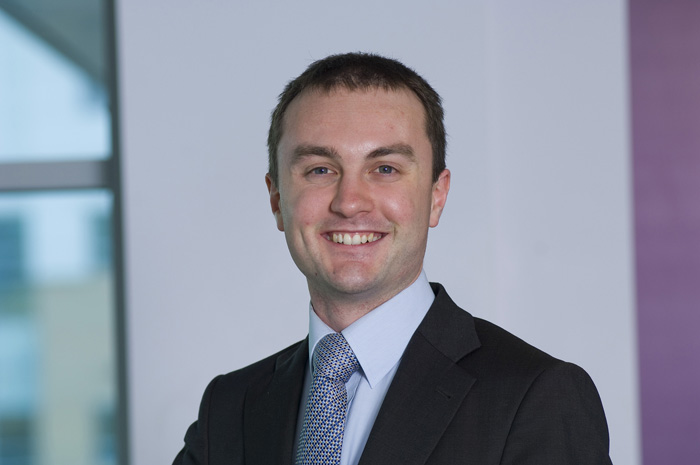
Dr Ian Broster is a founder and Director of Rapita Systems Ltd, a company specializing in on-target software verification. He is an experienced, lively lecturer who has given numerous training courses, lectures and presentations on this an other topics. his previous Ada Europe tutorials receive consistently excellent feedback. He has been involved with Ada since 1995 and earned his PhD at the Real-Time Systems Research Group of University of York.
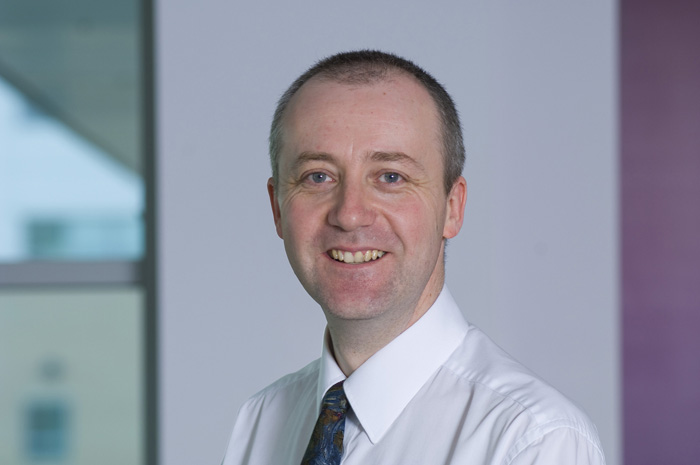
Dr Andrew Coombes runs the Marketing and Engineering Services group at Rapita Systems Ltd, a company specialising in tools for on-target verification of high-integrity embedded software. Since 1996 he has been involved in the development and commercialisation of software tools for embedded, real-time applications. Prior to this, he worked in a consultancy and for the BAE Systems DCSC (Dependable Computing Systems Centre). He received his DPhil in Computer Science at the High-Integrity Systems Engineering Group at the University of York.
T4 - Developing Mixed-Criticality Systems with GNAT/ORK and Xtratum
Alfons Crespo, Alejandro Alonso and Jon Pérez,UPV, UPM and IKERLAN
Modern embedded applications typically integrate a multitude of functionalities with potentially different criticality levels into a single system. In addition, the increasing power of mono-core and multi-core processors make it possible to integrate them in a single platform. However, this implies a number of challenges, being the integration of mixed-criticality applications one of them.
System partitioning emerges as a powerful alternative for dealing with these challenges. A hypervisor enables several virtual machines to be created, with spatial and temporal separation between them. Applications are assigned to partitions, according to different criteria, such as criticality. Resources are assigned to virtual machines so as to guarantee the fulfilment of the temporal requirements of the applications. This approach is also valid for multi-core computers.
This tutorial will introduce the attendee the basic techniques in the development of partitioned high integrity embedded systems, which will be illustrated with a case study. This development relies on the XtratuM hypervisor and supporting tools for validation, partitioning, and code and configuration files generation.
This tutorial will benefit attendees from the industry, as it will show in a practical manner the basics in the development of partitioned embedded systems. They could have an idea on how to integrate this approach on their current practices. Attendees from the academia will get acquainted with advance development techniques and open research topics. In addition, the availability of the development framework can be the base of laboratory assignments on advanced courses.
Level
Intermediate. The tutorial is aimed at project managers, systems engineers, and developers of high-integrity software systems, as well as academics teaching or researching on embedded systems.
Reasons for attending
Attendants will learn the main concepts and techniques needed to develop high-integrity partitioned real-time systems on a representative platform.
Presenters

Alfons Crespo is a Professor at the Department of Computer Engineering of the Technical University of Valencia. He received a PhD in Computer Science from the Technical University of Valencia, Spain, in 1984. He held the position of Associate professor in 1986 and full Professor in 1991. He leads the group of Industrial Informatics and has been responsible for several European and Spanish research projects. His main research interest include virtualization techniques for real-time embedded systems, real-time scheduling, scheduling and control integration. He has published more than 100 papers in specialised journals and conferences in the area of real-time systems.

Dr. Jon Pérez is a Researcher at IKERLAN research center. He is currently head of the embedded systems research line and works in the design and development of safety-critical embedded systems, for example SIL4 railway signaling (ERTMS/ETCS). He is a certified TÜV Functional Safety engineer for the design of hardware and software based on the IEC-61508 standard.
He has received a B. Eng in Industrial and Robotics at Mondragon University, a M.Sc. in Electronics & Electrical Engineering with distinction at the University of Glasgow and he finished his doctoral studies in Computer Science at Technische Universitäaut;t Wien (TU Wien) in the field of safety-critical embedded systems.
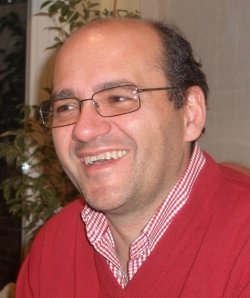
Alejandro Alonso received his Ph. D. in Computer Science in 1985. He became full professor of computer science. He belongs to the Department of Telematic Systems Engineering at the School of Telecommunication Engineering of the Universidad Politecnica de Madrid. His current research interests are in real-time and embedded systems, including design methods, software architectures, resource management, and operating systems. He has participated in several EU funded projects, as well as national government and industry funded research projects. His recent research activities include the development of a component for managing QoS and resources in embedded systems, and mixed-criticality systems, based on hypervisors. He is active member of ACM, IFAC, IEEE and Ada-Europe.
T5 - High-Integrity Object-Oriented Programming with Ada 2012
Ben Brosgol, AdaCore
Object-Oriented Programming (OOP) and associated features such as exceptions have been successfully used for many kinds of systems because of their benefits in software maintainability and reuse. However, until recently they have not made much traction among developers of High-Integrity software -- i.e., systems where high levels of safety and/or security are required. This tutorial, based on the Object-Oriented Technology and Related Techniques supplement (DO-332) to the DO-178C standard for commercial airborne systems, will describe the issues that arise with OOP in High Integrity systems and show how they can be addressed in Ada 2012. Among the topics to be covered is "Local Type Consistency Verification", a novel and practical approach to dealing with the verification issues associated with class inheritance, polymorphism, and dynamic binding.
Level
Knowledge of some Object-Oriented language is assumed, and experience with the OO features of Ada 95 will be useful. Familiarity with the new Ada 2012 features, or with software certification standards such as DO-178B/C, is not required.
Reasons for attending
Attendees will learn how to anticipate and avoid the various "traps and pitfalls" associated with OOP in safety-critical or high-security software, and how to use Ada 2012 to write OO programs that can comply with software standards such as DO-178C.
Presenter

Dr. Benjamin Brosgol is a senior member of the technical staff at AdaCore in the US. He has been involved with programming language design and implementation for more than 30 years, concentrating on languages and technologies for high-integrity systems. He participated in the design of Ada 83 and Ada 95, and he was a member of the Expert Group for the Real-Time Specification for Java. Dr. Brosgol has presented papers and tutorials at numerous conferences including Ada-Europe, ACM SIGAda, ESC (Embedded Systems Conference), ICSE (IEEE/ACM International Conference on Software Engineering), and SSTC (Systems & Software Technology Conference). He has in-depth knowledge of and experience with the specific topic of Object Orientation and software safety certification, and he has delivered conference presentations and written articles and papers on this subject. Dr. Brosgol holds a BA in Mathematics from Amherst College, and MS and PhD degrees in Applied Mathematics from Harvard University.
T6 - Ada 2012 (Sub)type and Subprogram Contracts in Practice
Jacob Sparre Andersen,, JSA Research & Innovation
The tutorial is organised in three sections. As an introduction, Ada 2012 contract aspects are presented, and it is discussed how they extend and complement the pre-2012 "contracts" (subtype constraints and parameter modes).
The second section gives guidance on how one can ensure a consistent application of contract aspects across a set of (sub)types and subprograms.
In the final section the tutorial attendees will be guided through a practical exercise in applying contract aspects.
Level
The tutorial is intended to be on an intermediate level. The intended audience is software engineers, who already know Ada, but have not yet used the new "programming by contract" aspects added in Ada 2012.
It is advised that the attendees bring laptops (with an Ada 2012 compiler installed) along for the tutorial, even if the practical exercises can be worked through with pen and paper.
Reasons for attending
The tutorial will give the participants guidance and practical exercises in applying contract aspects consistently across a set of (sub)types and subprograms.
Presenter
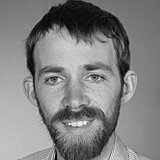
Jacob Sparre Andersen has previously given talks on his practical experiences with Ada 2012 (including the contract aspects) at Ada Europe 2013 in Stockholm and DANSAS'13 in Odense.
Jacob Sparre Andersen has worked as a lecturer in software engineering at CEUS with responsibility for courses in:
- Software design
- System programming
- Computer networks and network programming
- Software mediated games
On other occassions he has been a teaching assistant at the Niels Bohr Institute on courses in:
- Mathematics (for the biologists and geophysicists)
- Physics of complex systems
See http://www.jacob-sparre.dk/cv/ for a full curriculum vitae.
T7 - Technical Basis of Model Driven Engineering
William Bail, The MITRE Corporation
Model Driven Engineering (MDE) in its various names, such as Model Driven Architecture®), has matured since it was first envisioned, and as a consequence has become much more widely used throughout industry. Some practitioners are claiming significant gains in productivity and product quality, while others cite more modest benefits. This tutorial examines MDE, looking at the mechanics of its process, revealing its constituent elements, and describing how it automates portions of the development process. It analyzes the parts of the process where the productivity and quality gains are realized, and also takes a critical look at the various claims that are being made about its benefits. The tutorial provides an objective assessment of the maturity of MDE, and objectively assesses the potential benefits of using this technology. The tutorial does describe any specific tool but rather describes the underlying technical basis.
Level
Intermediate. Practitioners who have direct responsibility in planning of software system development, and in the selection of tools and techniques to be used for such developments.
Reasons for attending
This tutorial will provide the attendee with the basic understanding of the technical underpinnings of Model Driven Engineering, and thereby provide a basis for selection of this technique for candidate software development projects. The tutorial will also provide an assessment of the level of maturity of the technology, and provide a perspective regarding where additional research is needed. Understanding the underlying principles, and the relative strengths and weaknesses of MDE, is essential to making informed decisions and selecting (or not selecting) MDE as a development strategy
Presenter

Since 1990, Dr. Bail has worked for The MITRE Corporation in McLean VA as a Computer Scientist in the Software Engineering Center (SWEC) . MITRE is a not-for-profit corporation chartered to provide systems engineering services to the U.S. Government agencies, primarily the DoD, the FAA, and the IRS. Within MITRE, the SWEC focuses on supporting various programs with consultation, particularly transitioning emerging technologies into practice.
Dr. Bail's technical areas of focus include dependable software design and assessment, error handling policies, techniques for software specification development, design methodologies, metric definition and application, and verification and validation. Prior to 1990, Dr. Bail worked at Intermetrics Inc. in Bethesda MD.
From 1989 to 2011, he served as a part-time Adjunct Professor at the University of Maryland University College where he develops instructional materials and teaches courses in software engineering, in topics such as Software Requirements, Verification and Validation, Software Design, Software Engineering, Fault Tolerant Software, and others. Previously, Dr. Bail taught part-time at The University of Maryland from 1983-1986 in the Computer Science Department for undergraduate courses in discrete mathematics, computer architecture, and programming language theory.
Dr. Bail has presented tutorials on Cleanroom Software Engineering, Semi-Formal Development Techniques, Statistical Testing, and Requirements Engineering for Dependable Systems at SIGAda, AdaEurope, NDIA Systems Engineering Conference, and other conferences.
Dr. Bail received a BS in Mathematics from Carnegie Institute of Technology, and an MS and Ph.D. in Computer Science from the University of Maryland.
T8 - An Overview of Software Testing with an Emphasis on Statistical Testing
William Bail, The MITRE Corporation
Testing software systems is a critical stage in the overall development process. However, often, the testing approaches used fall short, allowing latent defects to leak through into deployed systems that are placed into service, even after what seems to be extensive testing. These defects become visible after the system is brought through a usage pattern that was unanticipated. In order to overcome these shortcomings, a combination of test techniques is recommended, ranging from coverage-based unit testing to operational profile based statistical testing. In this latter approach, the expected usage patterns of the system are identified and modeled. For these patterns, predicted probabilities of occurrence are generated, and test cases and scenarios are defined The results may then be used to estimate an overall reliability of performance. Stopping criteria is then applied to determine of the testing process has been sufficient for the system's goals. This approach also supports a significant increase in automation, thereby increasing the intensity of the testing and reducing the time needed to create and run the tests. The tutorial will present the basic of software testing, and will focus on the practice of statistical testing, in order to provide a basis for improving the quality of the overall test process.
Level
Intermediate. Attendee background should have direct involvement in planning for, designing, and implementing test programs for software systems.
Reasons for attending
Understanding the fundamentals of test approaches, and applying the concepts of statistical testing, will enable developers to more effectively detect latent defects, and ensure that the resulting system will present a more dependable pattern of operation after it is placed into operation.
Presenter

Since 1990, Dr. Bail has worked for The MITRE Corporation in McLean VA as a Computer Scientist in the Software Engineering Center (SWEC) . MITRE is a not-for-profit corporation chartered to provide systems engineering services to the U.S. Government agencies, primarily the DoD, the FAA, and the IRS. Within MITRE, the SWEC focuses on supporting various programs with consultation, particularly transitioning emerging technologies into practice.
Dr. Bail's technical areas of focus include dependable software design and assessment, error handling policies, techniques for software specification development, design methodologies, metric definition and application, and verification and validation. Prior to 1990, Dr. Bail worked at Intermetrics Inc. in Bethesda MD.
From 1989 to 2011, he served as a part-time Adjunct Professor at the University of Maryland University College where he develops instructional materials and teaches courses in software engineering, in topics such as Software Requirements, Verification and Validation, Software Design, Software Engineering, Fault Tolerant Software, and others. Previously, Dr. Bail taught part-time at The University of Maryland from 1983-1986 in the Computer Science Department for undergraduate courses in discrete mathematics, computer architecture, and programming language theory.
Dr. Bail has presented tutorials on Cleanroom Software Engineering, Semi-Formal Development Techniques, Statistical Testing, and Requirements Engineering for Dependable Systems at SIGAda, AdaEurope, NDIA Systems Engineering Conference, and other conferences.
Dr. Bail received a BS in Mathematics from Carnegie Institute of Technology, and an MS and Ph.D. in Computer Science from the University of Maryland.
T9 - Robotics Programming
Lars Asplund, Asplund Data AB
A number of small robots equipped with the Lars-board with an architecture that is similar to the Arduino, but build in H-bridges and protection on all signals. They are programed in Ada (no run-time) and the robots have two motors, two range-sensors both mounted on servos. You can with the servos direct the range sensors in different directions. Some robots have built in Wi-Fi for Robot-Robot communication.
The Tutorial is going to cover programming of an 8-bit micro-controller. There will be hands on programming, and each participant is required to bring a PC running windows. The tutorial will cover both low level programming, access to registers in the MCU and interrupt handling, as well as high-level programming. At the end of the day the participants will program the robot to do various tasks using packages for all needed functionality.
Level
Intermediate level. The audience should have a basic knowledge about Ada. First course in Computer Science...
Reasons for attending
Ada is today available for one of the most popular micro-controllers, and with this board or an Arduino you can make your own embedded system. It should be of particular interest for professors in universities.
Presenter
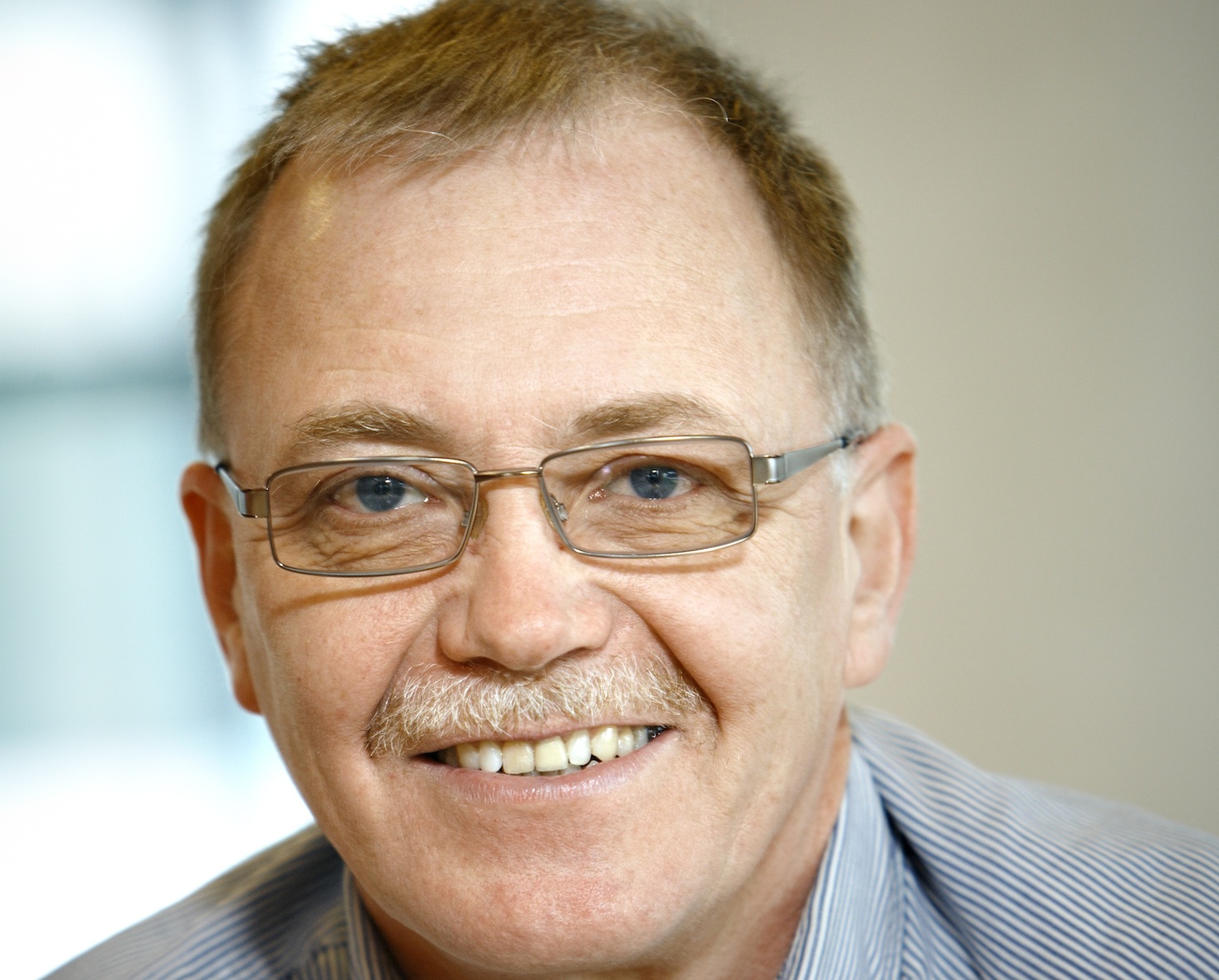
Lars Asplund has been involved with Ada since many years, and is currently a full professor in Computer Science at Mälardalen University in Sweden. Lars has recently published a book in Robotics (still in Swedish) where a lot of material for this tutorial is available.
T10 - Introduction to Verification with SPARK 2014
Angela Wallenburg and Yannick Moy, Altran UK and AdaCore
SPARK 2014 is the latest evolution of the SPARK programming language. Based on Ada 2012, it encompasses a rich subset of the language and augments it with further language contracts designed to support advanced static verification techniques.
This tutorial will provide a broad overview of the SPARK 2014 language: the subset of Ada 2012 which it includes and the additional constructs which it adds to support verification. The morning session will cover basic features and static analysis techniques. This will be followed by an introduction to one of the most novel features of the language - the dual nature of the contracts as both executable and mathematical statements and how these can be verified by testing, proof, or a combination of the two.
In the afternoon, the tutorial will look at more advanced language features that are essential for industrial-scale specification, such as abstraction and refinement. We will also look at more advanced verification techniques supported by the language such as information flow analysis and proving the absence of run-time exceptions (divide-by-zero, numeric overflow). Finally we will touch on some of the more advanced proof techniques that may be required.
Level
Intermediate. Prerequisites : knowledge of Ada (but not necessarily Ada 2012) and some basic familiarity with the concepts of static analysis
Reasons for attending
People wishing to learn more about the SPARK 2014 language and the opportunities it offers for novel verification techniques should attend. Attendees may be involved in or interested in new techniques for the engineering of safety- or security-critical applications or interested in languages and methods suitable for reducing post-delivery defect rates in consumer products.
Presenters

Angela Wallenburg is a Senior Software Engineer at Altran UK, where she is a co-developer of the SPARK language and verification tools. Altran UK specializes in the design and implementation of safety and security-critical systems.
Angela has taught software verification, and produced software verification teaching material, for over a decade at Chalmers and Gothenburg University in Sweden, University of Koblenz-Landau in Germany, and at Altran UK. She has held invited talks at BCTCS and Dagstuhl and given a number of presentations at software verification conferences. Before joining the SPARK team, Angela worked on program verification tools for Java and C#.
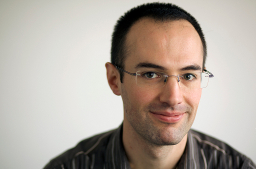
Yannick Moy is a Senior Software Engineer at AdaCore, where he works on software source code analyzers CodePeer and SPARK, aiming either at detecting bugs or at verifying safety/security properties.
Yannick lead the three-years project Hi-Lite leading to the new version of SPARK known as SPARK 2014. He presented SPARK at many international conferences and events, and is used to teaching SPARK trough classes, webinars and blogs. Yannick previously worked on source analyzers for PolySpace (now The MathWorks) and INRIA Research Labs.